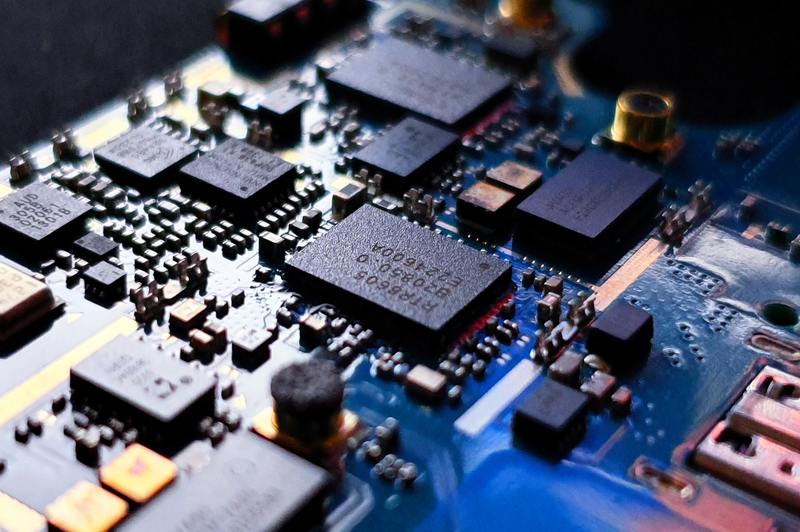Did you accidentally drop your electronic device in water? Well, read through to know what chemical works for water damaged circuit boards to save your soaked device.
Cleaning water damaged circuit boards can be a sort of challenge but it will be easier if you know what to use. No matter how much of a hassle it is, it is still best to clean it to avoid problems.

How does water damage circuit boards?
Your device may be spilled with water today and still function the next day like nothing happened. However, in two or more days, you’ll notice that it’s not working — that’s when you know you are in trouble. The water has already taken its toll and corrosion has occurred.
You may wonder, what exactly is corrosion? Corrosion comes in several forms, but its most common form occurs when oxygen and water are mixed with metal — which is the case with your device. This will create iron oxide or simply, rust.
How To Clean A Water Damaged Circuit Board
A water damaged circuit board is not like a countertop spilled with water that you can clean with just wiping. Cleaning corrosion is something you should be cautious of or it will cost you your device or bring further problems. The damage is not confined to the device itself but also your health and safety.
There are two ways you can use when cleaning a corroded circuit board. You can either use a solution of water, alcohol, and baking soda or simply buy a cleaning spray specially formulated to clean circuit boards.
Method #1. Cleaning with a solution
Step #1. Before you start cleaning, do not forget to remove the device’s power source and batteries. This will prevent short circuits and injury from happening.
Step #2. Then, spot the area of corrosion. You will know an area’s corroded when you notice a greenish or white substance that feels crusty.
Step #3. With Q-tips or cotton swabs, apply a solution of water, baking soda, and isopropyl alcohol. Vinegar can also be added. Wipe the area until corrosion is gone or let the solution sit for a while before wiping it off.
Step #4. Next, dry the device. You can use a soft cloth or a blower in a cool setting. NEVER USE HEAT when drying out your device.
Step #5. Finally, replace old batteries with new ones properly. Remember to dispose of the batteries properly and avoid causing damage to our environment.
Note: In case of significant corrosion, mix a generous amount of baking soda with water until it becomes a paste solution. Use a cotton swab and apply it to the corroded area. Leave it for 24 hours then apply the next steps.
Method #2. Using a cleaning spray
Since you are about to use a chemical solution, you should be aware that it might cause health effects. Make sure that you use protective eyewear and clothing and do the cleaning in a well-ventilated area or use a ventilation mask.
Step #1. This is the most important step. Disconnect the device from power sources and cables to prevent further damage and to protect yourself from potential injury.
Step #2. Spray the solution in the corroded area. Make sure that you get to apply it in all the affected parts.
Step #3. Now, with a cloth or cotton ball, wipe the circuit board clean.
What chemical works best for water damage?
There are a few materials you can use to clean corrosion on your circuit boards caused by water damage — such as baking soda and a cleaning spray. However, which works the best?
A phosphate-free household cleaner is helpful in effectively removing corrosion. Phosphates can protect circuit boards from corroding. However, it can be a major source of pollution, which we don’t like considering our environment’s current state.
Baking soda, aside from being a cooking and baking ingredient, is also an effective cleaning agent. Its abrasive qualities and alkalinity are what makes it the best for cleaning corroded circuit boards. It does a good job in neutralizing corrosion, and most importantly, it is not harmful to the environment and your health.
How to prevent corrosion?
Although corrosion may naturally occur at some point, the inevitable can be delayed. How? Just make sure that your electronic devices are kept away from ionic contamination.
To put it simply, make sure to store them in a dry environment free from moisture. Obviously, you have to keep anything with water away from your devices.
Conclusion
We may spill water on the table and easily clean it with a cloth, but cleaning a water damaged device is not as simple. Although there are cleaning methods available, it is still important to know which way to go.
Before you decide, ask yourself first what chemical works for water damaged circuit boards so you can be sure that everything will be fine with the device and you. In some instances, damage may be significant, so asking for professional help is a good idea. Nonetheless, as cliché as it may be, prevention will always be better than cure.
